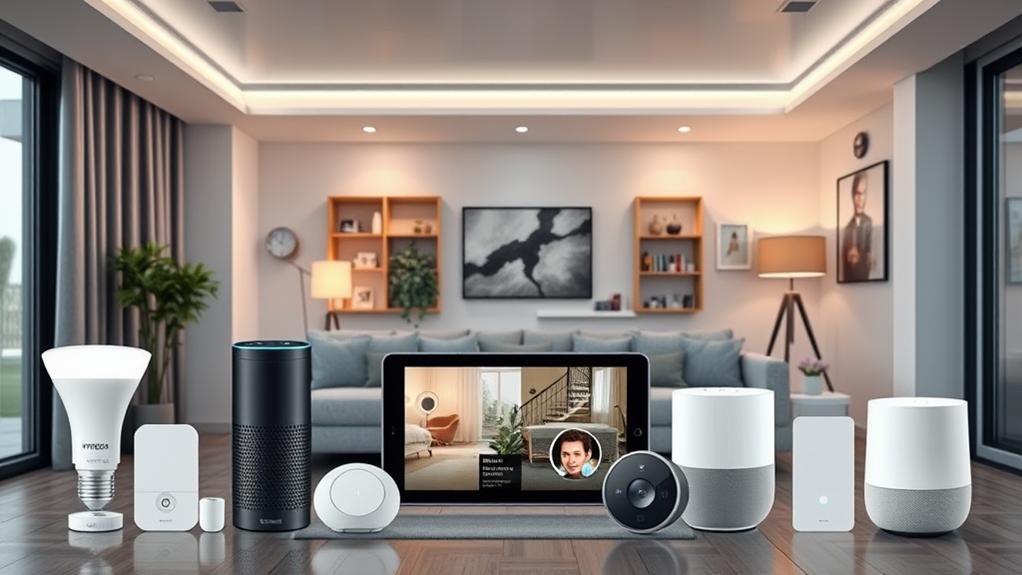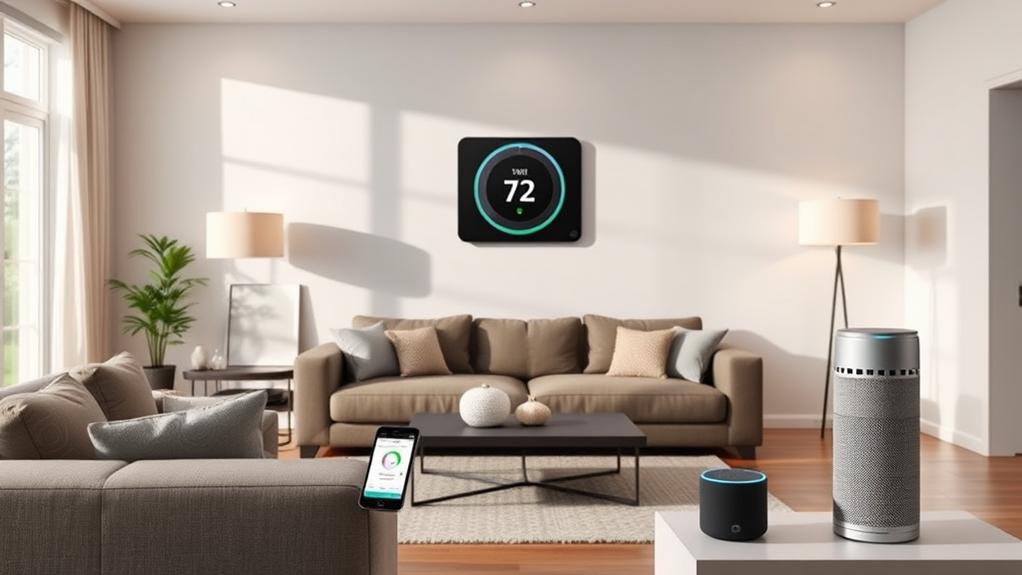Creating a perfectly integrated smart home is a formidable task, filled with challenges like device compatibility issues and ecosystem fragmentation. Different manufacturers' devices often require separate apps and controls, making seamless interoperability difficult. The Matter standard, though promising, is still in the early stages of adoption. Managing multiple ecosystems like Google Home, Apple HomeKit, and Amazon Alexa complicates control, while setting up automations can be complex and risk unintended consequences. Finding a balance between automation and simplicity is key, but it demands careful research to avoid a cluttered and inconvenient setup. As you navigate these trials, you'll discover how to streamline your smart home experience.
Device Compatibility Challenges
Device compatibility is a significant hurdle in the smart home landscape. As I navigate through the array of smart home devices, I often find myself constrained by technological fragmentation. Each device from different manufacturers may require separate apps and controls, complicating the user experience. Interoperability, the ability of devices to work together seamlessly, is vital but often lacking. The Matter standard, though promising, is still in the process of adoption, leaving many devices incompatible. Choosing the right ecosystem—whether it's Google Home, Apple HomeKit, or Amazon Alexa—is essential but comes with its own set of device compatibility and automation limitations. This complexity highlights the need for careful research on device compatibility to avoid a cluttered and inconvenient smart home setup.
Ecosystem Integration Issues

Traversing the smart home landscape, I frequently encounter a maze of ecosystem integration issues. Devices from Google Home, Apple HomeKit, and Amazon Alexa often don't play nicely together, forcing me to juggle multiple apps and ecosystems. This fragmentation hampers the seamless experience I crave. Each ecosystem has its own set of compatible devices and automation capabilities, which can be both a blessing and a curse. Apple HomeKit products, for instance, are consistent but pricey, while Google Home and Amazon Alexa offer more versatility but also more complexity. Managing these diverse ecosystems in a single household is a significant challenge, making the need for a unifying standard like Matter all the more compelling.
Automation Capabilities and Limitations
Automation in my smart home has been a double-edged sword. On one hand, it's incredibly powerful, allowing me to control lighting, blinds, and ceiling fans seamlessly based on time, occupancy, and temperature. Centralized remote control through platforms like Home Assistant has been a game-changer, enabling cross-ecosystem automation that native integrations often can't match. However, this flexibility comes with complexity. Setting up and configuring these automations can be formidable, and there's always a risk of unintended consequences. While Matter is poised to simplify interoperability, many existing devices still require careful research for compatibility. Striking a balance between automation and simplicity is essential to maintaining a user-friendly smart home experience.
Managing Multiple Ecosystems

Managing multiple smart home ecosystems can be a formidable task, especially when each ecosystem has its own set of compatible devices and unique features. Google Home, Apple HomeKit, and Amazon Alexa are the primary ecosystems, each with different device compatibility and automation capabilities. Apple HomeKit products, for instance, tend to be more expensive but offer consistent performance, while Google Home and Amazon Alexa have broader device support.
The proliferation of apps from different brands complicates control, making it essential to carefully choose devices that integrate seamlessly with your desired ecosystem. The Matter standard, which aims to enable cross-platform communication, is a promising solution but has yet to be widely adopted. Using a platform like Home Assistant can help consolidate devices and enable cross-ecosystem control, though it requires technical effort and can add complexity.
Balancing Complexity and Usability

Balancing complexity and usability is a constant challenge in the smart home journey. As I navigate through various devices and ecosystems, I've learned that simplicity often comes at a cost. On one hand, integrating multiple devices into a single ecosystem like Google Home, Apple HomeKit, or Amazon Alexa can streamline control, but it may limit the scope of automation. On the other hand, solutions like Home Assistant offer robust cross-ecosystem control, but they demand significant technical effort and can introduce unintended complexities. The key is finding a balance that suits my household's needs, ensuring that the automation enhances our experience without overwhelming us. Careful research and a thoughtful approach are essential to achieving this delicate balance.











